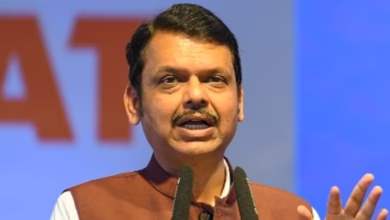- Reshaping the Nation: Community updates and the demographic forces transforming American life in a majority of urban centers.
- The Rise of Sun Belt Cities
- Impact on Housing Markets
- Infrastructure Challenges
- Shifting Demographics in Traditional Urban Centers
- The Impact of Remote Work
- The Challenge of Shrinking Populations
- The Millennial and Gen Z Influence
- Prioritizing Sustainability and Community
- Shifting Housing Preferences
- The Role of Immigration
Reshaping the Nation: Community updates and the demographic forces transforming American life in a majority of urban centers.
The American landscape is undergoing a profound shift, driven by evolving demographics and community dynamics. Understanding these changes is crucial for policymakers, businesses, and individuals alike. Recent data reveals significant population movements and transformations in the cultural and economic fabric of many urban centers. This detailed examination of community updates and demographic forces provides valuable insights into the reshaping of the nation, an essential exploration stemming from current news and statistical analyses.
The Rise of Sun Belt Cities
For decades, the Sun Belt – states stretching across the South and Southwest – has been experiencing consistent population growth. This trend is fueled by a combination of factors, including warmer climates, lower costs of living (compared to coastal cities), and burgeoning job markets. Cities like Phoenix, Arizona; Austin, Texas; and Raleigh, North Carolina, have seen explosive growth in recent years, attracting residents from the Northeast, Midwest, and even California. This influx impacts infrastructure, housing availability, and local politics.
The economic appeal of these cities is considerable. Tech companies are establishing larger presences, bringing high-paying jobs and attracting a skilled workforce. The lower regulatory burdens and tax incentives offered by these states are also proving attractive to businesses. This economic growth, however, presents challenges related to affordable housing and potential strain on public resources.
Furthermore, the demographic profile of Sun Belt cities is changing. A growing number of young professionals and families are relocating, alongside retirees seeking a more comfortable lifestyle. This diversity is fostering new cultural scenes and reshaping the social fabric of these communities. Understanding these trends is vital for planning future growth and addressing potential inequalities.
Impact on Housing Markets
The rapid population growth in Sun Belt cities has led to a dramatic increase in housing demand, pushing prices upwards and creating a competitive real estate market. This has made homeownership increasingly unattainable for many residents, particularly those with lower incomes. The construction of new housing developments struggles to keep pace with demand, exacerbating the problem. Many communities are grappling with the challenge of balancing growth with affordability.
Rental rates have also surged, placing a significant financial burden on renters. This housing crisis is prompting some cities to implement policies aimed at increasing housing supply and providing assistance to those struggling to afford rent. Innovative solutions, such as zoning reforms and the development of affordable housing units, are being explored to address this pressing issue. The long-term effects of these changes will undoubtedly shape the future of these communities.
Infrastructure Challenges
| City | Population Growth (2020-2023) | Housing Affordability Index | Infrastructure Capacity (Rating 1-5) |
|---|---|---|---|
| Phoenix, AZ | 15.2% | 2.8 | 3.2 |
| Austin, TX | 22.5% | 3.1 | 3.0 |
| Raleigh, NC | 18.7% | 3.5 | 3.7 |
| Las Vegas, NV | 12.9% | 2.5 | 2.8 |
Shifting Demographics in Traditional Urban Centers
While the Sun Belt is experiencing rapid growth, many traditional urban centers in the Northeast and Midwest are facing population decline. This is often attributed to factors such as high costs of living, limited job opportunities in certain sectors, and unfavorable tax climates. These cities are grappling with the challenge of attracting and retaining residents in the face of these economic headwinds.
However, there are signs of resilience in some of these cities. Efforts to revitalize downtown areas, attract new industries, and improve quality of life are beginning to yield positive results. Investment in arts and culture, improvements to public transportation, and initiatives to promote affordable housing are helping to attract a new generation of residents.
The demographic profile of these cities is also evolving. An increasing number of young professionals and creative individuals are choosing to live in these urban centers, drawn by the cultural amenities and vibrant communities. This influx of talent is helping to diversify the economy and foster innovation.
- Increased remote work opportunities
- Growing demand for urban lifestyle
- Revitalization of downtown areas
- Investment in arts and culture
The Impact of Remote Work
The rise of remote work has significantly altered the dynamics of population distribution. With the ability to work from anywhere, many individuals are choosing to leave expensive urban centers in favor of more affordable and desirable locations. This trend has accelerated the growth of smaller cities and suburban areas, creating new economic opportunities and reshaping traditional commuting patterns. It’s important to note the shift isn’t a full exodus, but a significant recalibration of where and how people live and work. Many companies are embracing hybrid models, allowing employees to split their time between the office and remote locations, offering flexibility and improved work-life balance.
This shift in work patterns has also impacted the commercial real estate market in traditional urban centers, with demand for office space declining as companies downsize their footprints. However, these vacated spaces are being repurposed for residential use, creating mixed-use developments that enhance the vibrancy of downtown areas. The long-term effects of remote work on urban planning and economic development are still unfolding, but it is clear that this trend is here to stay.
The Challenge of Shrinking Populations
Cities experiencing population decline face a unique set of challenges. Declining tax revenues, increased strain on public services, and a shrinking workforce can all contribute to a downward spiral. These cities need to find innovative ways to attract new residents and retain existing ones.
Strategies for reversing population decline include investing in infrastructure improvements, promoting economic development, and enhancing quality of life. Incentives for businesses and individuals to relocate to these areas can also be effective. Additionally, these cities need to embrace their unique strengths and capitalize on their cultural assets to create a desirable place to live and work. The revitalization of these communities requires a long-term vision and a collaborative effort from government, businesses, and residents.
The Millennial and Gen Z Influence
Millennials and Generation Z are playing a pivotal role in reshaping the nation’s demographic landscape. These generations have different priorities and preferences than their predecessors, influencing where they choose to live, work, and invest. They are increasingly drawn to diverse, walkable communities with access to amenities and cultural attractions.
They prioritize experiences over material possessions and are more likely to embrace alternative lifestyles. This has led to a rise in co-living spaces, micro-apartments, and other innovative housing options. They are also more likely to support sustainable practices and advocate for social justice. Their values are influencing the decisions of businesses and policymakers alike.
Furthermore, Millennials and Gen Z are more likely to embrace remote work and entrepreneurship, creating new economic opportunities and challenging traditional career paths. They are driving innovation and fostering a more dynamic and adaptable economy. Their impact on the nation’s demographics is profound and far-reaching.
Prioritizing Sustainability and Community
- Demand for walkable neighborhoods
- Focus on public transportation
- Support for local businesses
- Commitment to environmental sustainability
Shifting Housing Preferences
Millennials and Gen Z are more likely to rent than own, due to factors such as student loan debt, job insecurity, and a preference for flexibility. This has created a strong demand for rental housing, particularly in urban centers. They are also drawn to smaller, more sustainable housing options that align with their values.
They are less interested in the traditional single-family home and more open to alternative living arrangements, such as co-living spaces and micro-apartments. This trend is driving innovation in the housing market and challenging traditional zoning regulations. Understanding these shifting housing preferences is crucial for developers and policymakers seeking to meet the needs of these generations.
The Role of Immigration
| State | Immigrant Population (%) | Economic Contribution (Billions) | Growth Rate (%) |
|---|---|---|---|
| California | 27% | $350 | 1.2% |
| Texas | 23% | $200 | 1.8% |
| Florida | 22% | $180 | 2.0% |
| New York | 24% | $300 | 0.8% |
Immigration continues to be a major driver of population growth and demographic change in the United States. Immigrants contribute significantly to the economy, filling labor shortages, starting businesses, and paying taxes. They also enrich the cultural diversity of communities across the nation.
However, immigration policy is a complex and often contentious issue. Debates over border security, pathways to citizenship, and the economic impact of immigration continue to shape public discourse. Understanding the multifaceted contributions of immigrants is essential for formulating effective policies that promote economic growth and social integration.
The demographic impact of immigration is particularly pronounced in certain states and cities, where immigrants make up a significant portion of the population. These communities are often vibrant and dynamic, offering a unique blend of cultures and perspectives. It’s a force for change, constantly contributing to reshaping the American landscape.
The ongoing demographic shifts represent a period of significant change for the United States. Understanding these forces – the growth of the Sun Belt, the evolution of traditional urban centers, the influence of Millennials and Gen Z, and the role of immigration – is crucial for navigating the challenges and opportunities that lie ahead. A thoughtful and adaptable approach to planning and policy is essential for building a more equitable and sustainable future for all.




